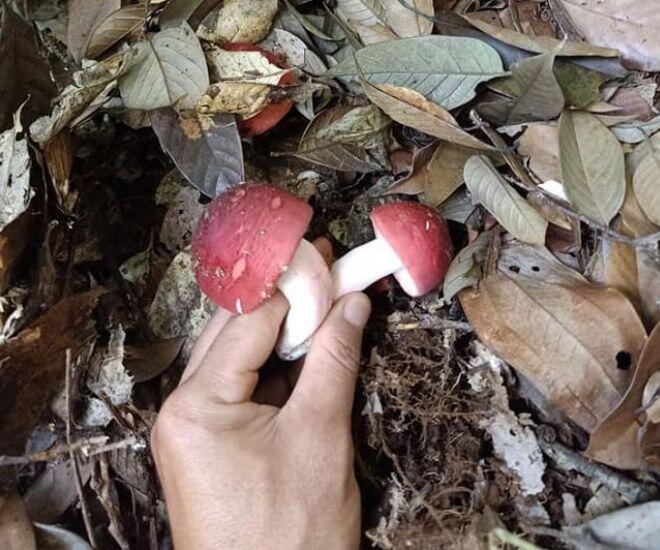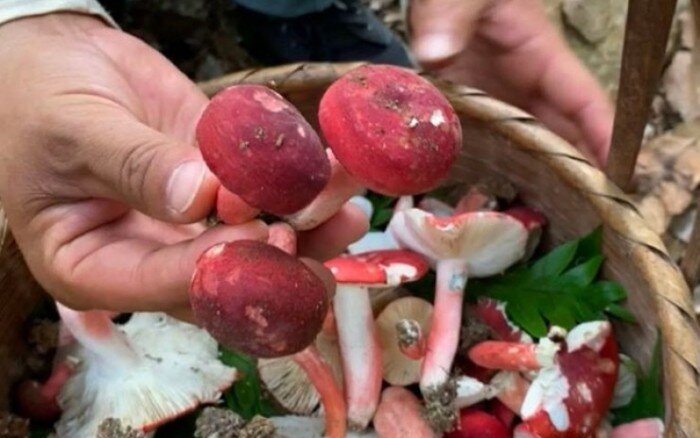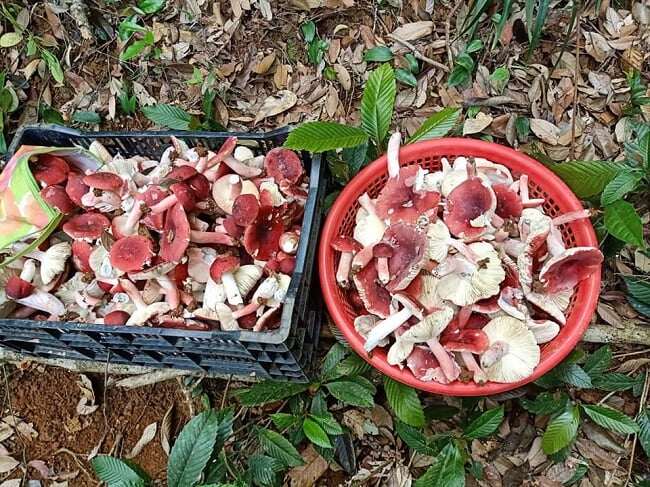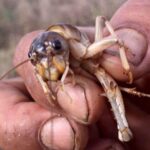
The Elusive Scarlet Elfin Cap, a Wild Delicacy of Vietnam’s Mountainous Forests
The Scarlet Elfin Cap mushroom, known locally as “nấm chẹo”, is an elusive delicacy that graces the forests of Lạng Sơn, Bắc Ninh, and Thái Nguyên provinces in Vietnam for only a brief period each year. This wild mushroom is a seasonal treat, appearing for just a week during the rainy season under the canopy of chestnut or oak forests.
To capture this fleeting treasure, foragers rise as early as 2-3 am, armed with flashlights, and venture deep into the forests. They seek the mushrooms when they first emerge, their caps still curled and coated in a precious layer of dew. This is when the mushrooms are at their most delicious and valuable.
The Scarlet Elfin Cap is not just a culinary delight but also a source of significant income for local communities. Its rarity and short life cycle, lasting only 1-2 days before decay sets in, make it a highly sought-after ingredient. Foragers must be quick and careful in their harvest, as not every chestnut forest boasts the presence of these mushrooms, adding to their exclusivity.

Harvesting the Scarlet Elfin Cap demands finesse and dexterity. Foragers gently lift the mushroom’s stem or slowly twist it to avoid breaking its delicate legs or disturbing the precious dew on its cap. Local folklore warns that touching the mushrooms too early in their growth can startle them, halting their development. This showcases the deep understanding and respect locals have for this fungus, passed down through generations.
The mushroom’s rarity and high economic value have led to intense competition and a need for resource protection. Families who own chestnut forests sometimes camp in the woods to safeguard their precious crop from thieves. A successful harvest, done with skill and good weather, can bring in tens of millions of dong in just a few days of foraging, making it a lucrative endeavor for mountain dwellers.

In the market, fresh Scarlet Elfin Caps fetch a price of 200,000 to 300,000 dong per kilogram. When dried, their value skyrockets to millions of dong per kilogram, yet they remain perpetually sold out. Producing one kilogram of dried mushrooms requires an average of 6-7 kilograms of fresh mushrooms, which are then dried for 6-7 hours. During the rainy season, when the mushrooms retain more moisture, it can take up to 7 kilograms of fresh mushrooms to yield one kilogram of dried product, highlighting the labor and cost involved in the drying process, which contributes to the high market price.
The Scarlet Elfin Cap is described as a delicacy that is “deceptively toxic-looking but irresistibly tasty.” Its bright red appearance belies a captivating flavor that lends itself to a variety of dishes, such as stir-fries with garlic, bone broth soups, stews with buffalo meat, or beef stir-fries. Even the simplest preparation, sautéing the mushrooms with a hint of garlic and light seasoning, yields a sweet and crisp dish that captivates even the most discerning palates.
During mushroom season, traders from far and wide camp out in the villages for weeks, eager to buy the mushrooms directly from the foragers. This trade provides a substantial income for locals, with some earning millions of dong per day, significantly improving their economic situation.
![]()
However, the Scarlet Elfin Cap is becoming increasingly rare. One of the main reasons for this is the local practice of slash-and-burn agriculture, which inadvertently destroys the mushroom’s mycelial network, severely impacting its ability to regenerate. Additionally, due to their nocturnal nature, foragers tend to uproot the entire mushroom, including its roots, to increase their yield, further affecting the gene pool and future growth.
A decade ago, the Scarlet Elfin Cap was relatively unknown, and its price was modest. Locals would often pick them for personal consumption. However, with a surge in popularity and market demand, these mushrooms have become a highly sought-after delicacy. Each season, families flock to the forests to forage for this wild treat. For customers from distant provinces, sellers carefully pack the mushrooms in ice boxes and ship them via passenger buses to ensure freshness. This trade has become a stable and lucrative source of income, with each family earning up to 40 million dong per mushroom season.
As the Scarlet Elfin Cap becomes scarcer, sustainable harvesting and conservation practices are crucial to preserving this valuable resource. This not only safeguards a significant income stream for locals but also protects the “red gold” of Lạng Sơn’s mountains from depletion.



































